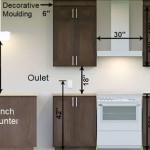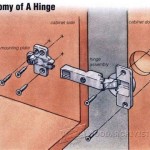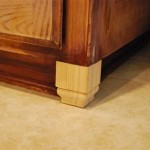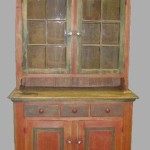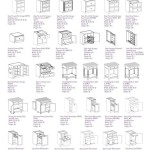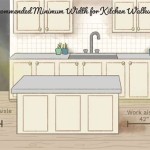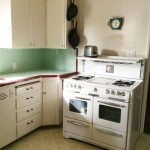Kitchen Cabinet Veneer Repair: Restoring Your Kitchen's Charm
Kitchen cabinets are a significant part of a kitchen's aesthetic and functionality. They provide storage space, define the kitchen's style, and contribute to its overall appeal. However, over time, these cabinets can endure wear and tear, especially their veneer, which is the thin layer of decorative material applied to the surface. Veneer damage can range from minor scratches to more serious chips and peels, impacting the cabinet's appearance and potentially reducing its value. Fortunately, kitchen cabinet veneer repair is a feasible and cost-effective solution to restoring your kitchen's charm.
Understanding Veneer Damage
Veneer damage can occur due to various factors, including:
- Everyday wear and tear: Regular use, like opening and closing cabinet doors, can cause scratches and abrasions.
- Impact damage: Accidents, such as bumping into the cabinet or dropping heavy objects, can lead to dents, chips, or complete veneer removal.
- Moisture exposure: Excessive moisture, like spills or leaks, can cause the veneer to warp, bubble, or delaminate.
- Age and exposure: Over time, veneer can become brittle and more susceptible to damage, especially if exposed to sunlight.
Understanding the type and severity of damage is crucial for determining the appropriate repair method.
Repairing Veneer Damage
The repair process for veneer damage varies depending on the type of damage and the level of expertise required. Here are some common methods:
1. Minor Scratches and Abrasions:
For minor scratches and abrasions, a simple polish or touch-up with a matching veneer marker can often suffice.
- Clean the surface: Use a mild detergent and a soft cloth to clean the affected area. Ensure it's completely dry before proceeding.
- Apply polish: Use a furniture polish or a specialized wood polish to smooth out shallow scratches. Buff the area gently with a clean cloth.
- Use a marker: For deeper scratches, use a veneer marker that closely matches the cabinet's color. Apply the marker lightly, following the grain of the wood.
These methods can often blend minor scratches with the surrounding veneer, making them less noticeable.
2. Chips and Peels:
Repairing chips and peels requires a more involved approach. One method is to use a veneer patch:
- Prepare the surface: Clean the affected area and carefully remove any loose or chipped veneer. Use a sharp utility knife or a razor blade for this step.
- Apply wood filler: Fill the gap created by the chip or peel with a wood filler that matches the cabinet's color. Allow the filler to dry completely according to the manufacturer's instructions.
- Apply veneer patch: Cut a piece of veneer that matches the cabinet's color and grain pattern. Use a strong wood adhesive to attach the veneer patch to the filled area. Ensure the patch is flush with the surrounding surface.
- Sand and finish: Once the adhesive dries, carefully sand the patched area to blend it with the surrounding surface. Apply a finish that matches the existing cabinet finish.
This method can effectively repair chips and peels, restoring the cabinet's original appearance.
3. Severe Damage:
For severe damage, including delamination or significant veneer loss, professional intervention is often recommended. Specialized repair techniques, such as veneer replacement or inlays, may be necessary. Contact a qualified cabinetmaker or veneer specialist for assistance with such cases.
Key Points to Consider
Here are some key considerations when dealing with veneer damage:
1. Color Matching:
Finding a matching veneer or stain is crucial for achieving a seamless repair. Consult with a professional or search for a veneer supplier who specializes in matching existing colors and patterns.
2. Choosing the Right Repair Method:
The repair method should align with the type and severity of damage. Minor scratches can be addressed with simple polishing, while chips and peels may require more complex techniques. If unsure, consult with a professional for guidance.
3. Protecting the Veneer:
After repair, protecting the veneer is essential to preventing future damage. Consider applying a clear sealant or furniture wax to enhance its durability and resist moisture and scratches.
By understanding the repair options and following the right steps, you can effectively restore your kitchen cabinets, preserving their elegance and functionality while enhancing the overall appeal of your kitchen.
How To Repair Warped Cabinet Veneer Ifixit Guide
How To Repair Warped Cabinet Veneer Ifixit Guide
How To Repair Warped Cabinet Veneer Ifixit Guide
How To Repair Warped Cabinet Veneer Ifixit Guide

Refinishing Kitchen Cabinets Modern Refacing Made Easy Wisewood
How To Repair Warped Cabinet Veneer Ifixit Guide

How To Fix Holes In Veneer On Kitchen Cabinets Doityourself Com Community Forums
How To Repair Warped Cabinet Veneer Ifixit Guide

How To Reface Kitchen Cabinets With Veneer

How To Repair Ling Veneer On Particle Board Cabinets Handhills
Related Posts

